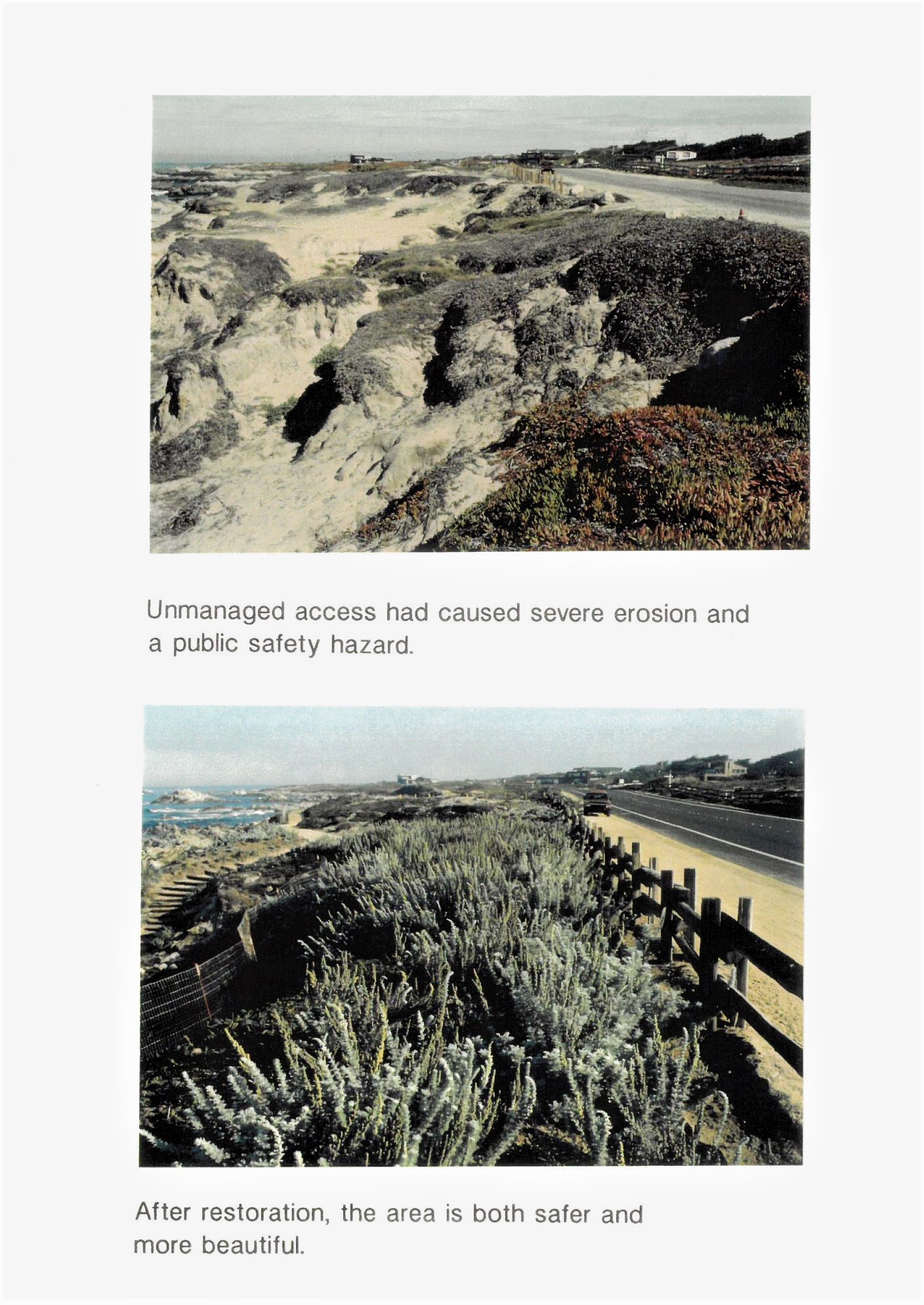Asilomar Coast Trail Restoration Project History
Asilomar Coast Trail Restoration Project History
The original Asilomar State Beach Dunes Restoration Plan was created in 1986 to rebuild the sand dune ecosystem and enable sustainable, high-quality recreation in this habitat area for all State Parks visitors. Prior to the restoration project, the dunes and coastal area of Asilomar were highly disturbed by unchecked human recreation which resulted in trampled native vegetation, invited invasive/non-native plant species, and destabilized slopes and dunes, leading to massive erosion and sand movement. (Figures 1 and 2)
The official Asilomar Coast Trail construction that was part of the overall 1986 restoration project included:
- Installation of permanent split rail fencing along Sunset Ave.
- Delineated parking spaces and trail entrances.
- Construction of the single trail between Sunset Ave and the Ocean.
- Trail was built with a mix of decomposed granite trail and wood boardwalks.
- Allowed access to all the beaches and rock outcropping while concentrating all foot traffic onto maintained trails in order to preserve the ecological integrity of the natural habitat areas.
This 1986 project was essential to the overall restoration of the sand dune ecosystem. Encouraging visitors to walk only on the designated trail and through designated entrances, allowed native dune plants to survive and naturally repopulate the habitat area without competition from sustained foot traffic. The 1986 project documents also reference the potential for future sea-level rise as a result of the “greenhouse effect” (Climate Change), and acknowledges that some sections of the Asilomar Coast Trail would likely need to retreat inland.
Coast Trail Boardwalk

Coast Trail Native Plant Habitat

